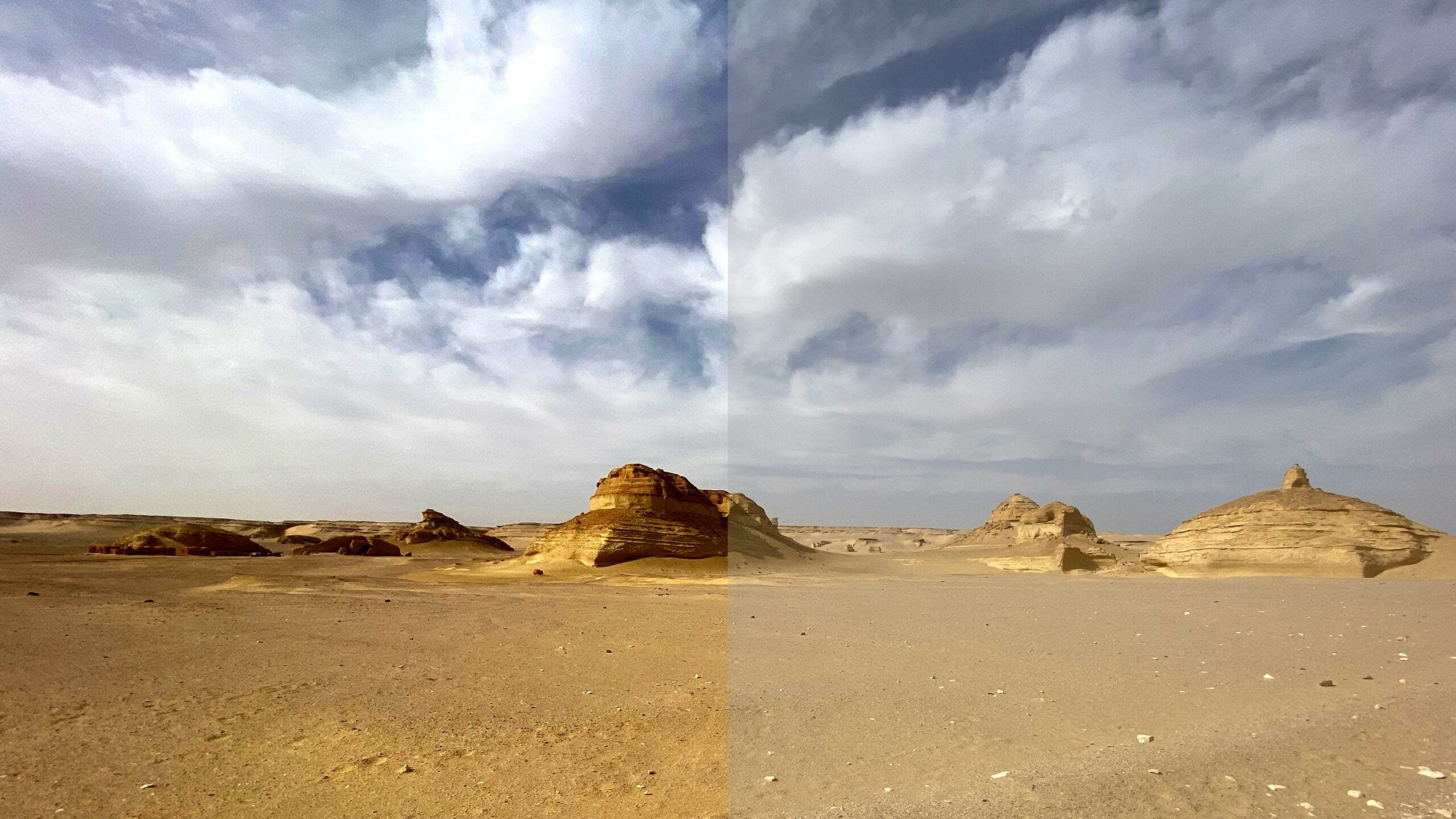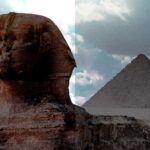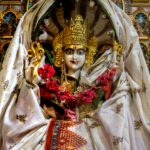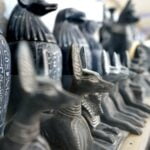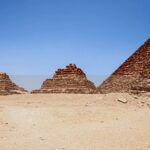Welcome to an enchanting journey through the enchanting world of ancient Egyptian myths. In this article, we will dive deep into the mesmerizing realm of the Isis and Osiris, and the epic battle between Set and Horus. Prepare to be captivated by the enigmatic legends that have shaped the beliefs and culture of the ancient Egyptians for centuries. We will unravel the tales, explore their cultural significance, and delve into the fascinating symbolism that lies within. So, sit back, relax, and let us embark on an exploration of these iconic Egyptian myths, offering a glimpse into the mystical universe of gods and goddesses, fierce battles, and timeless wisdom.
Famous Egyptian Myths
Egyptian myths have enchanted people for centuries, offering a glimpse into the rich tapestry of ancient Egyptian culture and beliefs. These captivating tales not only entertained but also held significant cultural and religious importance. Let’s embark on a journey to explore some of the most famous Egyptian myths and uncover their enchanting narratives.
The Creation Myth of Ra: The Egg that Named All Living Beings
One of the most iconic Egyptian myths is the creation myth of Ra. This enigmatic tale takes us back to the very beginning when the world was nothing but darkness, and an enormous, cosmic egg floated in the vastness. From within this egg emerged Ra, the sun god, who brought light and life to the universe.
As Ra ascended to the heavens, he embarked on a mission to name all living beings. Can you imagine the power it must have taken to name every creature that roams the earth? It’s as if Ra possessed an innate understanding of all beings, a connection to their essence that enabled him to give them their identities.
Key Point:
The creation myth of Ra, also known as the Myth of Creation, unveils the fascinating origins of the Egyptian world and highlights Ra’s extraordinary power and knowledge.
The Myth of Osiris and Isis: The Struggle for Power
The myth of Osiris and Isis tells the captivating story of love, power, and sibling rivalry. Osiris, the rightful heir to the throne, marries his sister Isis, and together, they become Egypt’s beloved rulers. However, their blissful reign is soon threatened by their jealous brother Set, who desires to usurp Osiris’ power.
In a tale filled with treachery and deceit, Set cunningly tricks Osiris and murders him, scattering his dismembered body throughout Egypt. Devastated by the loss of her husband, Isis embarks on a quest to find and resurrect him. Through her unwavering dedication and powerful magic, she manages to gather the scattered pieces of Osiris and bring him back to life, albeit only briefly.
Key Point:
The myth of Osiris and Isis explores the themes of love, loss, and the eternal struggle for power, showcasing the unwavering determination of Isis and the enduring legacy of Osiris.
The Myth of Horus and Set: The Avenging Son
A tale of divine conception and the eternal battle between good and evil, the myth of Horus and Set is filled with intrigue and suspense. After the murder of Osiris, Isis conceives a son, Horus, through magical means. Horus, imbued with divine power, grows up to become the rightful ruler of Egypt, destined to avenge his father’s death and reclaim his legacy from the treacherous Set.
The struggle between Horus and Set encapsulates the ongoing conflict between order and chaos, justice and injustice. It’s a battle where ancient forces clash, each vying for supremacy over the land of the Nile. Through their epic encounters, Horus proves his worth as a protector and champion of the Egyptian people.
Key Point:
The myth of Horus and Set delves into the eternal struggle of good versus evil, presenting Horus as the valiant defender of justice and the embodiment of Egypt’s hopes and aspirations.
The Myth of Anubis and the Weighing of the Heart: The Journey to the Afterlife
In ancient Egyptian belief, death was not the end but rather the beginning of a new journey. The myth of Anubis and the Weighing of the Heart acquaints us with Anubis, the god of embalming and the afterlife. As the son of Osiris, Anubis played a pivotal role in guiding the deceased through the complex process of judgment and ushering them into the everlasting realm of the afterlife.
In this awe-inspiring myth, the hearts of the deceased are weighed against the feather of Ma’at, the goddess of truth and justice. If a person’s heart is found to be pure and free from the burden of wrongdoing, they are granted eternal life. However, if their heart is heavy with sin, it is devoured by the monstrous Ammit, and their journey comes to a tragic end.
Key Point:
The myth of Anubis and the Weighing of the Heart illuminates the Egyptians’ profound belief in justice and the importance of leading a righteous life, culminating in the judgment of one’s heart in the realm of the afterlife.
Unveiling the Enigmatic Legends
These famous Egyptian myths, from the creation myth of Ra to the struggles of Osiris and Isis, Horus and Set, and the journey to the afterlife with Anubis, offer profound insights into the ancient Egyptian worldview. They provide us with a glimpse into their beliefs, values, and quest for understanding the mysteries of life and death.
Exploring these iconic tales, it becomes evident that the myths of ancient Egypt aren’t simply bedtime stories but rather narratives that shaped the cultural and religious fabric of a civilization. They reflect the Egyptians’ profound understanding of the human condition, their fascination with the divine, and their eternal quest for truth and justice.
Key Point:
Through the lens of these famous Egyptian myths, we unravel the intricate tapestry of ancient Egyptian culture, where gods and mortals intertwine, and the boundaries between the earthly and the divine blur. The enchanting legends of Egypt continue to captivate and inspire us, reminding us of the enduring power of storytelling and the timeless human quest for meaning.
Famous Egyptian Myths
Uncover the captivating world of famous Egyptian myths and legends. Prepare to be mesmerized by the tales of powerful gods and goddesses who once roamed the land of the Pharaohs. From the mythical stories surrounding the renowned deities to the intriguing narratives of creation myths, there is something for everyone to explore. Dive into the mesmerizing accounts of the popular Egyptian myths that have shaped the ancient civilization. Discover the enigmatic myth of Isis and Osiris, a tale filled with love, betrayal, and resurrection. Unveil the fascinating story of Ra, the creator of the universe, as he battles against the forces of chaos. Delve into the spellbinding realm of Egyptian mythology and immerse yourself in the divine realm of famous gods and goddesses. So, what are you waiting for? Embark on this extraordinary journey through time and click here to unveil the secrets of the famous Egyptian myths and legends: famous egyptian gods and goddesses.
Step into the realm of ancient Egypt and immerse yourself in the rich tapestry of its culture and history. Explore the mesmerizing tales that have been passed down through generations, shaping the myths and legends now famous across the world. Click here to unravel the stories of Famous Egyptian Myths And Legends and delve into the enigmatic world of the gods and goddesses who once ruled over this ancient civilization.
Embark on a captivating journey through the annals of history as you uncover the secrets of famous Egyptian mythology. From the mighty deities to the age-old traditions and beliefs, this fascinating collection of stories will transport you to a time when gods walked among mortals. Click here to discover the ancient tales that continue to captivate the imagination of humanity.
Unlock the hidden knowledge of the ancient Egyptians as you delve into the world of famous Egyptian gods names. Through this portal, you will learn about the divine beings who commanded both the elements and the fate of humanity. These names have resounded through the ages, and now you have the opportunity to embark on a journey of discovery.
Prepare to be swept away by the enthralling narrative of The Myth Of Isis And Osiris. This timeless tale tells the story of love, betrayal, and resurrection, weaving together the lives of two of ancient Egypt’s most famous deities. Click here to unravel the mystery surrounding this captivating myth.
Immerse yourself in the captivating world of popular Egyptian myths. Through these enchanting tales, discover the legends that have captured the hearts and minds of generations. From epic battles between gods to tales of mankind’s creation, these myths offer a glimpse into the ancient civilization that once flourished alongside the Nile.
Travel back in time and witness the grandeur of the universe’s creation through The Story Of Ra Creation Myth. This mesmerizing narrative tells the tale of Ra, the sun god, as he battles against the forces of chaos to bring order to the cosmos. Click here to uncover the secrets of this awe-inspiring myth and experience the birth of a new era.
Don’t miss out on the chance to explore the wonders of famous Egyptian myths. Click on the links above and let your curiosity guide you on a remarkable journey through the ancient realm of gods and goddesses, heroes and legends.
The Isis and Osiris
The myth of Isis and Osiris is a tale that has captivated the hearts and minds of countless individuals throughout the ages. It is a story that weaves together elements of love, betrayal, death, and resurrection, making it one of the most enduring and iconic myths in ancient Egyptian mythology.
According to the myth, Isis was the daughter of Geb and Nut, and the sister of Osiris, Seth, and Nephthys. The priests of Heliopolis developed the myth of Isis, portraying her as a powerful and influential deity. However, it was the cosmic role of Osiris and Isis that truly set them apart.
Osiris, the god of fertility and the embodiment of the dead and resurrected king, along with Isis, were believed to have brought ancient Egypt civilization. When Osiris inherited the throne from the sun god Ra, he and Isis introduced agriculture, law, and religious rituals. Their reign was seen as a time of great prosperity and harmony.
The story of Isis and Osiris takes a tragic turn when Seth, Osiris’ jealous brother, plots to kill him and seize the throne for himself. Seth succeeds in murdering Osiris, dismembering his body, and scattering the pieces across Egypt. Isis, devastated by the loss of her beloved, embarks on a quest to find and resurrect Osiris.
With determination and unwavering love, Isis travels the length and breadth of Egypt, retrieving and reassembling Osiris’ body. Through her magical powers, she restores his life temporarily, and they conceive their son, Horus. However, their joy is short-lived, as Osiris ultimately descends into the underworld to become the Egyptian Lord of the Underworld and Judge of the Dead.
Despite this heartbreaking outcome, the myth of Isis and Osiris continues to resonate with people today. It delves into universal themes of love, loss, and the enduring struggle for power. It reminds us that even in the face of adversity, love can conquer all.
Furthermore, the myth of Isis and Osiris also showcases intriguing cross-cultural influences. For example, Isis possesses Greek traits, such as her invention of marriage and her role as the protector of ships at sea. These elements reveal the interconnectedness of ancient cultures and the rich tapestry of mythology that exists across civilizations.
In addition to its narrative appeal, the myth of Osiris and Isis holds immense religious and cultural significance in ancient Egyptian belief. Osiris is not only the father of Horus, but also serves as a central figure in the Egyptian obsession with the afterlife. The notion of judgment and the weighing of the heart, as depicted in the myth of Anubis and the Weighing of the Heart, stems from the mythology surrounding Osiris.
To truly grasp the essence of ancient Egyptian religion and mythology, one must explore the stories and symbolism intertwined with the myth of Isis and Osiris. It offers insights into the profound beliefs, values, and quest for understanding the mysteries of life and death that defined ancient Egyptian civilization.
In conclusion, the myth of Isis and Osiris stands as a testament to the enduring power of storytelling and its ability to transcend time and culture. This enigmatic legend of love, betrayal, and resurrection speaks to the fundamental human experiences that resonate with us all. By unraveling the layers of this ancient tale, we gain a deeper understanding of the captivating narratives and cultural significance that mythology holds. As we journey through the myth of Isis and Osiris, we embark on a quest of our own, seeking wisdom and connection from the legends of the past.
The Battle of Set and Horus
In the pantheon of ancient Egyptian myths, one saga stands out as a timeless tale of the eternal struggle between good and evil: The Battle of Set and Horus. This captivating myth delves deep into the realms of gods and mortals, showcasing the triumph of the virtuous Horus over the malevolent Set. But beneath the surface lies a profound lesson about loyalty, standing up for what is right, and the power of resilience. In this exploration, we will unravel the enigmatic legends surrounding the Battle of Set and Horus, shedding light on its cultural significance and lasting impact.
The story begins with Set, driven by jealousy and ambition, slaying his own brother Osiris to claim the throne of Egypt for himself. This act of treachery sets the stage for an epic confrontation between Horus, the son of Osiris, and Set. In their struggle for sovereignty, the heavens intervene, and the Sun god Ra imposes a series of trials to determine who is worthy to rule.
The battles between Horus and Set become legendary, with each deity showcasing their divine strengths and cunning tactics. Horus, embodying the power of righteousness, fights against the malevolence of Set, whose thirst for power knows no bounds. Through a series of intense confrontations and divine interventions, Horus prevails, avenging his father’s death and ascending to the throne of Egypt.
But victory does not come without sacrifice. In the midst of the fierce battle, Horus sustains a debilitating injury, with his left eye being damaged. Only through the intervention of the wise god Thoth is Horus able to restore his sight and find the strength to defeat Set. This symbolizes the importance of healing and finding inner strength in times of adversity, a powerful metaphor for the human experience.
Ultimately, the Battle of Set and Horus serves as an enduring symbol of the triumph of good over evil. It showcases the Egyptians’ deep belief in justice and the eternal struggle between opposing forces. The story teaches us the importance of loyalty, valor, and the willingness to fight for what is right, values that resonate with individuals across cultures and throughout the ages.
“The Battle of Set and Horus echoes with the timeless tale of good versus evil, reminding us that even in the face of darkness, the light of righteousness will ultimately prevail.”
The myth also sheds light on the significance of Horus as a prominent deity in ancient Egyptian mythology. Often associated with the sky and kingship, Horus embodies the ideals of leadership and the divine right to rule. His victory over Set signifies the restoration of order and balance in the Egyptian cosmos, providing a narrative foundation for the Pharaoh’s claim to authority.
By delving into the depths of ancient texts, archaeological findings, and scholarly interpretations, we can unravel the layers of symbolism and cultural significance embedded within the Battle of Set and Horus. This exploration of Egyptian mythology affords us a unique perspective on the ancient Egyptians’ worldview and the profound impact of their myths on their understanding of the human experience.
So let us embark on a journey, a voyage through time and space, as we unravel the mysteries of the Battle of Set and Horus and unearth the valuable lessons and insights it holds. Join me as we delve into the enigmatic legends of iconic Egyptian myths and discover the cultural tapestry woven by the stories of gods and mortals.
“The Battle of Set and Horus beckons us to explore the depths of its enigmatic legends, inviting us to unlock the ancient wisdom and timeless truths it holds.”
the eternal battle between good and evil and the quest to restore justice. – The importance of Anubis in Egyptian mythology as the guide of souls to the afterlife. – The significance of Bastet as the protector of the Egyptian world and the reverence for cats in ancient Egyptian culture.]
[youtube v=”uZe49S1Q8b8″]
Title: Egyptian Mythology: Unveiling the Stories of Ra, Horus, Osiris, Seth, Anubis, and Bastet
Introduction (already provided):
Egyptian mythology is a rich tapestry of captivating stories that unveil the origins of the Egyptian world, the struggles between gods, and the triumph of good over evil. The myths of Ra, Horus, Osiris, Seth, Anubis, and Bastet stand as pillars of this ancient belief system, each with its own unique narrative and significance. In this article, we will delve into these myths, exploring the themes of creation, love, loss, power, and the role of these prominent deities in ancient Egyptian culture.
[Article Section]
The Creation Myth of Ra: Origins of the Egyptian World
In the beginning, the universe was a vast chaotic ocean, devoid of form and structure. Amid this primal chaos emerged a sacred Benben, a huge pyramid-shaped mound, upon which a lotus flower bloomed. As the flower blossomed, the god Ra, the Sun God, came into existence, bringing light to the world. Ra generated the first generations of gods, giving birth to Shu, the God of the Air, and Tefnut, the Goddess of Rain. The universe, still immersed in primordial waters, saw these divine siblings plunge into the waters to explore their immensity. In their absence, Ra was filled with longing and sent his best messenger to find them. Shu and Tefnut returned safely, and from Ra’s tears of joy, human beings were born. The children of Shu and Tefnut, Geb, the God of the Earth, and Nut, the Goddess of the Sky, set the stage for the creation of the sky and the earth, establishing the foundations of the Egyptian world. Ra, the Great God, became the first Pharaoh, gifting Egypt with sacred animals and creating the life-sustaining Nile River.
The Myth of Osiris and Isis: Love, Loss, and the Struggle for Power
Osiris, the God who once reigned supreme, became the new ruler of the universe after dethroning Ra. He took Isis, the goddess of magic and wisdom, as his wife, ushering in a reign of great prosperity. Osiris brought civilization to humanity, teaching them agriculture, weaving, and the baking of bread. He established laws to bring order to chaos, and under his benevolent rule, the Egyptian civilization flourished. However, Osiris had a powerful and ambitious brother, Seth, who coveted his brother’s fertile and prosperous kingdom. Seth devised a plan to exact revenge upon Osiris and take all power for himself. He seduced Osiris’ wife, Nephthys, resulting in the birth of Anubis, the God of the Dead. Angered by his brother’s betrayal, Seth orchestrated a feast in his honor and enticed Osiris to try a beautifully crafted coffin. Once inside, Seth sealed the coffin and threw it into the Nile, drowning Osiris. Isis, devastated by the loss of her beloved husband, wept profusely, and her tears gave rise to the traditional floods of the Nile River. Despite Seth’s efforts to prevent Osiris’ resurrection, Isis, with the help of Anubis, recovered Osiris’ body and mummified him, utilizing her divine powers. Osiris returned to life but was destined to reign over the world of the dead, while Isis became the divine mother figure and giver of life.
The Myth of Horus and Seth: The Eternal Battle for Justice
Seth, the god of destruction, usurped the throne from his brother, Osiris, instigating a reign of terror. However, Osiris had left behind an heir, his son Horus. Horus, the falcon god, was prophesied to bring light back to Egypt, ending the darkness imposed by Seth. Horus, as an adult, challenged his uncle for the throne, leading to a series of clashes. In an effort to resolve the dispute, the gods presided over a court, with Ra as the judge. Seth, cunningly protected by Ra, proposed a challenge to Horus, whereby both would transform into hippos and submerge themselves for three months. Horus relied on his mother, Isis, who discovered Seth’s vulnerability and intended to take advantage of it. However, Isis could not bring herself to harm Seth, causing Horus to attack his own mother in a fit of rage. Thoth, the deity of knowledge, intervened, saving Isis by replacing her severed head with that of a cow. The conflict between Horus and Seth persisted, leading to various confrontations. In one instance, Seth plucked out Horus’ eyes, but with the help of Hathor, the goddess of love, Horus regained his vision. After years of battling, the court of gods demanded a reconciliation between Horus and Seth. Seth, pretending to be benevolent, invited Horus to a feast in his palace, where he attempted to render Horus unworthy of the throne. Horus defended himself and prevented Seth’s poisonous seed from taking effect. In retaliation, Horus sought revenge with the assistance of Isis. Together, they contaminated lettuce leaves with Horus’ divine seed, which Seth unknowingly consumed. Seth’s deterioration was evident to all, and he was humiliated. After 80 years, the court granted Horus the throne, the rightful heir to Osiris. Isis, filled with pride, witnessed her son assume his father’s throne. Seth’s fate was to travel with Ra across the skies, his enraged screams echoing as thunder.
The Importance of Anubis: Guiding Souls to the Afterlife
Anubis, the god with a jackal head, played a crucial role in Egyptian mythology as the guide of souls to the afterlife. He was one of the oldest Egyptian deities and initially held the position of the main deity associated with death and the underworld. Anubis was also recognized as the god of embalming and mummification. During funeral rites, priests would wear jackal masks, symbolizing Anubis, as they performed the mummification process. Known as the protector of tombs and cemeteries, Anubis ensured the safe passage of the deceased to the underworld. In the realm of the dead, Anubis judged the souls of the departed, weighing their hearts against the feather of truth. Depending on the outcome, the souls would either find eternal rest or face perpetual damnation. In later periods of Egyptian and Greek rule over Egypt, Anubis became associated with Hermes, the god who also guided souls to the underworld. This amalgamation gave rise to the deity known as Hermanubis during the Roman era. Anubis continues to be one of the most revered and popular deities in Egyptian mythology.
The Significance of Bastet: Protector of the Egyptian World
Bastet, the cat goddess, was deeply intertwined with ancient Egyptian culture and revered as a protective deity. Depicted with a woman’s body and a cat’s head, she symbolized both grace and ferocity. Cats held great significance in Egyptian society, as they protected crops from rodents and warded off treacherous snakes. Bastet would follow Ra during the day, accompanying him in his solar boat as he traversed the skies. At night, she transformed into a cat, remaining watchful and attentive, guarding the world against the malevolent serpent, Apophis. The Egyptians regarded cats as sacred animals, and harming them was considered a sacrilege punishable by death. Cats were considered cherished family members, and it was said that they possessed nine lives. According to folklore, cats would bravely enter burning homes to aid their human companions, often appearing lifeless in the flames but miraculously surviving with the intervention of Bastet. The reverence for cats was so significant that they were mummified, and dedicated cemeteries were established for these animal remains. In some versions of Egyptian mythology, Bastet and Sekhmet, the lion goddess, were regarded as sisters and daughters of Ra, highlighting their connection to each other and to the divine lineage.
Conclusion (already provided):
The myths of Egyptian mythology are woven with intricate tales of creation, love, loss, and the constant struggle between good and evil. Ra, Osiris, Horus, Anubis, and Bastet represent the diverse aspects of this ancient belief system. Ra’s creation myth showcases the beginnings of the Egyptian world and Ra’s power as the Sun God. The myth of Osiris and Isis explores themes of love, loss, and the usurpation of power. The myth of Horus and Seth exemplifies the eternal fight for justice and the rightful ascension to the throne. Anubis, as the guide of souls to the afterlife, holds a crucial role in the journey of the deceased. Bastet stands as the protector of the Egyptian world and the symbol of the revered and sacred feline companions. These myths and deities continue to captivate our imagination and provide insights into the ancient richness of Egyptian culture and spirituality.
FAQ
Q: What is the myth of Isis and Osiris about?
A: The myth of Isis and Osiris is a story of love, betrayal, death, and resurrection. It revolves around Osiris becoming Egypt’s sole ruler after marrying Isis, and the subsequent struggle against his brother Set.
Q: What are the Greek influences on the goddess Isis?
A: The goddess Isis has Greek influences, such as the invention of marriage and the protection of ships at sea.
Q: Who is Horus and what is his significance in ancient Egyptian mythology?
A: Horus is a prominent deity in ancient Egyptian mythology, associated with the sky and kingship. He is the son of Osiris and Isis, as described in the Osiris myth, and is known for his left eye being damaged in the Battle of Set and Horus, which was later healed by the god Thoth.
Q: What is the Battle of Set and Horus myth about?
A: The Battle of Set and Horus is a myth that represents the eternal struggle between good and evil. Set kills his brother Osiris to take over Egypt, and Horus challenges him for the throne. After a series of trials imposed by the Sun god Ra, Horus eventually defeats Set, avenging his father and assuming the rule.
Q: What does the myth of Horus and Set teach us?
A: The myth of Horus and Set highlights the triumph of good over evil and the importance of loyalty and standing up for what is right. It also showcases the role of Horus as an important deity in Egyptian mythology, associated with kingship and the sky.
- Unraveling Einstein’s Legacy: Who Inherited His Genius? - July 14, 2025
- Unlock Einstein’s Family Tree: Bernhard Caesar & Untold Stories - July 14, 2025
- Unveiling Bernhard Caesar Einstein: His Life & Albert Einstein’s Legacy - July 14, 2025
